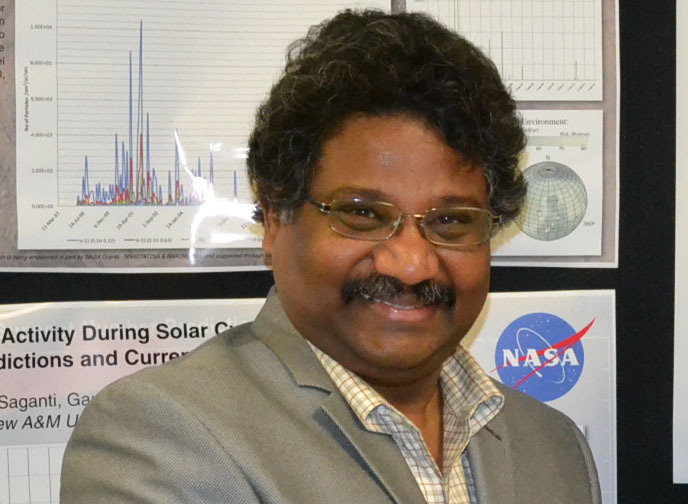Abstract
Recently, we developed a CMOS (complementary metal oxide) based radiation Track Structure Detector (TSD) system for capturing and analyzing heavy ion tracks at cellular dimensions with a 1.67 microns per pixel resolution and more than 10 M pixels on the sensor.
To characterize the heavy ion particle track structure at micron level, we collected data with several ions of varying energies at NASA Space Radiation Laboratory (NSRL) of the Brookhaven National Laboratory (BNL). In particular, due to recent interest of carbon ions for treatment applications, we collected data with carbon ions (300 MeV and 55 MeV) at NSRL. Also, we characterized carbon ions (290 MeV) at the HIMAC (Heavy Ion Medical Accelerator in Chiba) facility in Japan for analyzing track structure and fragments across the particle track. All our experiments with detector system are augmented with biological samples making use of a custom built chamber slide adopter designed to reside atop of the sensor unit for correlating spatial distribution of the track structure and trajectory impact at cell level for samples such as mCherry -53BP1 hippocampal neuronal cells.
Our data of particle tracks are promising to interpret the track length and spatial distribution of radiation particles at cell dimensions. Also, our data is promising to study fragments along the particle trajectory. Results of carbon ion tracks and cell impacts will be presented along with other track structure observations.
Speaker Bio
Premkumar B. Saganti, Ph. D., is a Regents Professor - Texas A&M University and Research Director - Radiation Institute for Science and Engineering, a CRI at Prairie View A&M University. As a Regents Professor, Dr. Saganti’s prominent recent accomplishments through CRI/RaISE ($8M) and DOE/NASA ($8M) include:
- Establishment of the first Chancellor’s Research Initiative (CRI/RaISE) at PVAMU with state-of-the-art capabilities and unique imaging systems for advanced radiation biology studies and world class expertise.
- Development and launch of two different space payloads successfully – on Shinen2 Spacecraft with a payload (PPD) around the Sun between Venus and Mars Orbits (2014), and on the Ten-Koh Spacecraft with a payload (SHARP-CPD) in Earth’s Polar Orbit (2018) through KIT (Prof Okuyama) and JAXA.
- Renovation and Expansion of PVAMU Solar Observatory (2017) and the construction of a New Observatory Building (2019) with capabilities that are first-of-its kind including custom developed camera systems and two piers.
- Author or Co-Author of 10 books (including NASA Publications) and more than 200 journal / conference papers with more than 2000 citations in Text Books per Google Scholar / Books.
- Space radiation and visualization accomplishments (DNA and Mars) appeared in several NASA publications and web pages including - National Geographic, DISCOVER, and SCIENCE.
